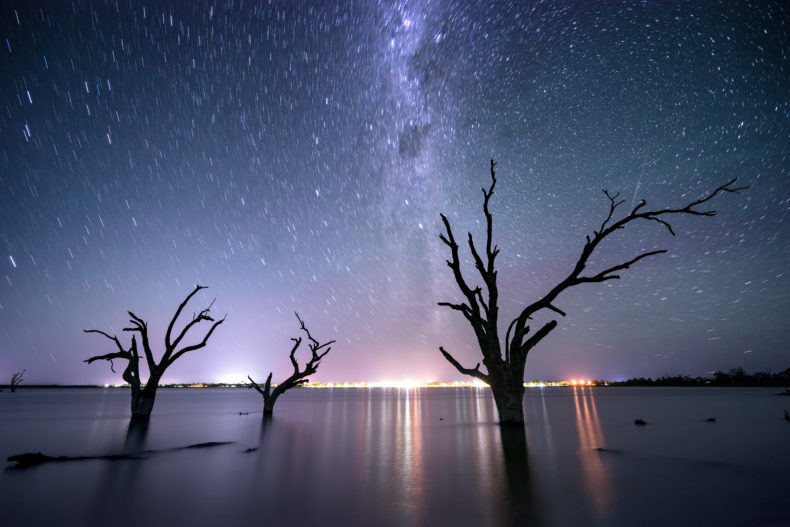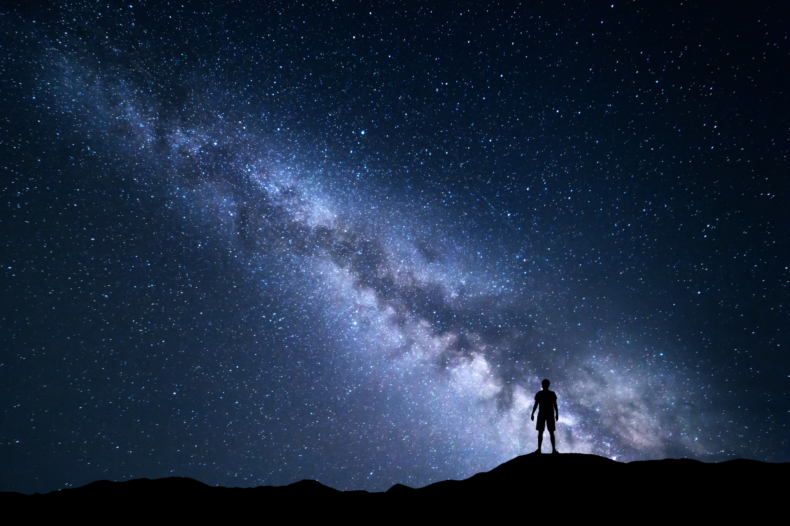
I’ve been working lately to get a handle on where awe fits into our lives, especially the intersection of awe and science. In my journeys, I met someone who sheds light on the awe appeal of science fiction and how it has changed over the history of filmmaking.
Michael Backes worked in Hollywood for decades. He’s done everything from co-writing screenplays with Michael Crichton to consulting on the science in the Spider Man franchise, to advising on the logic of Iron Man’s suit. He has worked with Steven Spielberg, Tom Clancy, and James Cameron, and he co-founded the American Film Institute’s Digital Media Studies program. Over time, he has seen the progression of audience expectations.
“When you work on blockbuster movies, you’re in the awe business,” he tells me from his home in LA. “Especially now that you have so much ability to synthesize imagery. What we’ve done is raise the bar for awe amongst viewers. And now it’s interesting, because visual awe is a little tougher now.”
Working on the 1993 production of Jurassic Park as the display graphics supervisor, the original plan was to make all of the T-Rexes in the movie using big rubber models with F-18 flight simulator armature machinery stuck inside them. They had one built already on the Warner Brothers stage, and it was awe-inspiring because it was really big, but it somehow didn’t look real at all.
George Lucas’s visual effects company Industrial Light & Magic (ILM) had suggested they could create something using computer graphics imagery, but the idea had been met with skepticism, so a couple of the guys there decided to take the initiative themselves. They modeled a T-Rex on their computer and animated it coming out of a forest.
“They sent the footage down. I was sitting in the theatre in Spielberg’s complex, and I watch these guys who have built the rubber ones watch their careers go away,” says Backes. “It was wild because they were awestruck. They had pissed on the idea of using computer graphics for dinosaurs in any of the scenes, but then they saw something much bigger than themselves coming toward them at high speed.”
Backes likens what he witnessed to a person who has invested all their training and work experience in the horseshoe business who sees the first car and immediately gets struck viscerally by the implications and future impact.

As science fiction has developed, and in particular our ability to use visual storytelling to enhance the narrative, the audience begins to trust that to the greatest extent possible, what they see is actually scientifically accurate. Compare the depiction of faster-than-light travel in the 1968 movie 2001: A Space Odyssey to the same phenomenon in Christopher Nolan’s 2014 film Interstellar. 2001 uses a split screen effect to suggest a character travelling through a star portal. Nolan, in contrast, sat down with a physicist and actually worked out what travelling through a wormhole might look like while you’re in it. The result is breathtakingly trippy.
“Nolan has a spectacular sense of scaling and is really good at awe-inspiring shots. I mean, really, it’s baked into him,” says Backes. It’s not just fancy car crashes; it’s not Michael Bey. It’s this kind of calm, almost detached observation of something that lies outside of the ordinary person’s imagination.”
But these days he thinks visual awe has run its course. By itself it can’t pack a punch without being combined with other types of awe, like moments of true spiritual connection in film—a difficult target to hit. After Jurassic Park, a lot of the crew, including production designer moved straight over to work on the set of Robert Zemecki’s adaptation of Carl Sagan’s novel Contact, starring Jodie Foster. They took that perceptual awe that has now been more or less tapped out, and married it with conceptual awe of the kind that Backes now seeks out. It has all the visual vastness of beautifully rendered starscapes, but it explores intellectual epiphanies that use that starscape as their backdrop, to silent, heart-thudding effect.
“When you get to the lecture sequence at the end of the movie where her father effectively—or an alien masking as her father gives her a lecture of where we are in the universe, that’s awe inspiring,” says Backes. “I think that was Sagan’s intention. Certainly it was Zemecki’s intention.”
But what if that’s just a breakwater measure, and the tide is still slowly going out on our ability to feel awe in art? Maybe visual awe is just the first to go, and in the end we will be made jaded and numb by our most talented artists. The flip side to new generations believing that everything is possible may be a ‘meh’ reaction to the nigh-on impossible. Perhaps the next generation of art will be that of sensory deprivation, to resensitize us to the beauty of the rest of the world. Just one more problem we’re handing down through our poisoned progress.